Things To Do In Hue, Vietnam (Updated May 2025)
In this blog, i share about all the local and touristy things to do in Hue, lies about 700km (430mi) from Hanoi and 1100km (680mi) from Ho Chi Minh City.
Traditionally, Hué (Pronounced ‘hway’), has served as one of Vietnam’s main cultural, religious, and educational centres. Its Thien Mu Pagoda ranks among the most famous sights in Vietnam.
The Emperor Gia Long began constructing the huge, moated Citadel (Kinh Thanh) in 1804, and it now features many fascinating sights, such as the Ngo Mon Gate, Nine Holy Cannons, Thai Hoa (the Palace of Supreme Harmony), Nine Dynastic Urns, and the Halls of the Mandarins. Unfortunately, the Vietnam War largely destroyed the intriguing Forbidden Purple City.
16 Must-see Attractions & Activities in Hue
Famous for its Imperial palaces along the fragrant banks of the Perfume River (Song Huong River), Hue proudly holds its place as Vietnam’s ancient capital. While many visitors spend just a day exploring the UNESCO-listed Hue Citadel, the city offers far more than first impressions suggest. Let’s find out best things to do in Hue, Vietnam;
1. Enjoy boat trips on Perfume River (Song Huong)
The Perfume River gained fame from the film Full Metal Jacket, but travelers explored this scenic waterway long before the movie’s 1987 debut. Each fall, blossoms from nearby orchards fall into the river, creating the unique fragrance that inspired its name.
The river provides interesting boat trips and views of the city at any time of year, but only those who visit in fall months will be able to enjoy the river’s uniquely beautiful aroma.
The clean waters bring cooling breezes to cyclists pedaling along the winding banks beside local rice fields and offer stunning views of Ngu Binh Mountain. End your day with a cool beer on a late-afternoon dragon boat ride through Hue, watching the sun set as the city comes alive with lights.
Hue, Thua Tien Hue

2. Thien Mu Pagoda
Sat on a small hill overlooking the Perfume River, just 4km southwest of the Citadel, this seven-storey pagoda remains a lasting icon of Vietnam and a powerful symbol of Hue—equally significant as the Citadel. Notably, the 21m-high octagonal tower, Thap Phuoc Duyen, was built during the reign of Emperor Thieu Tri in 1844, with each storey dedicated to a manushi-buddha (a Buddha who appeared in human form).
Founded in 1601 by Nguyen Hoang, governor of Hue, Thien Mu Pagoda has undergone centuries of destruction and restoration.
Huonh Hòa, Hue, Thua Thien Hue
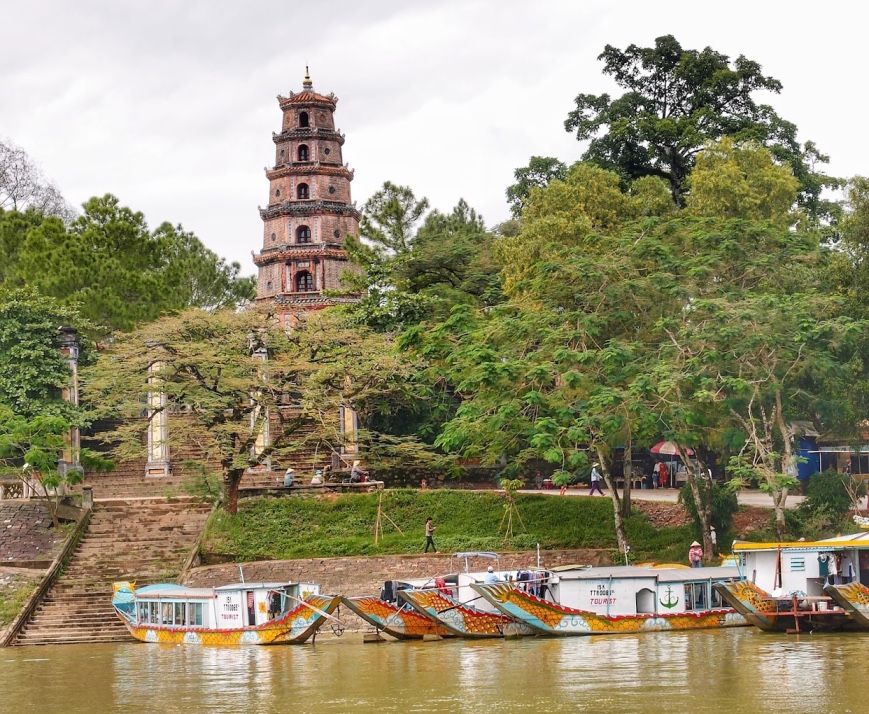
3. The Imperial city of Hue (Dai Noi)
Constructed in 1804, this massive fortress designed for the Gia Long Emperor, is surrounded by a zigzag moat and defensive barrier that’s 21 meters thick. But visitors to this citadel-in-a-citadel-in-a-citadel won’t need to swim across rivers or scale towering walls to get a look inside.
The Imperial city of Hue is accessible by crossing one of the 10 pedestrian bridges into the once royal land. Pass through Ngo Mon (Noon) Gate, once reserved for those in power, then wander through Flag Tower (Cot Co) and stare up at the nation’s tallest flagpole before weaving through the Nine Dynastic Urns representing different Nguyen kings.
Phu Hau, Hue, Thua Tien Hue
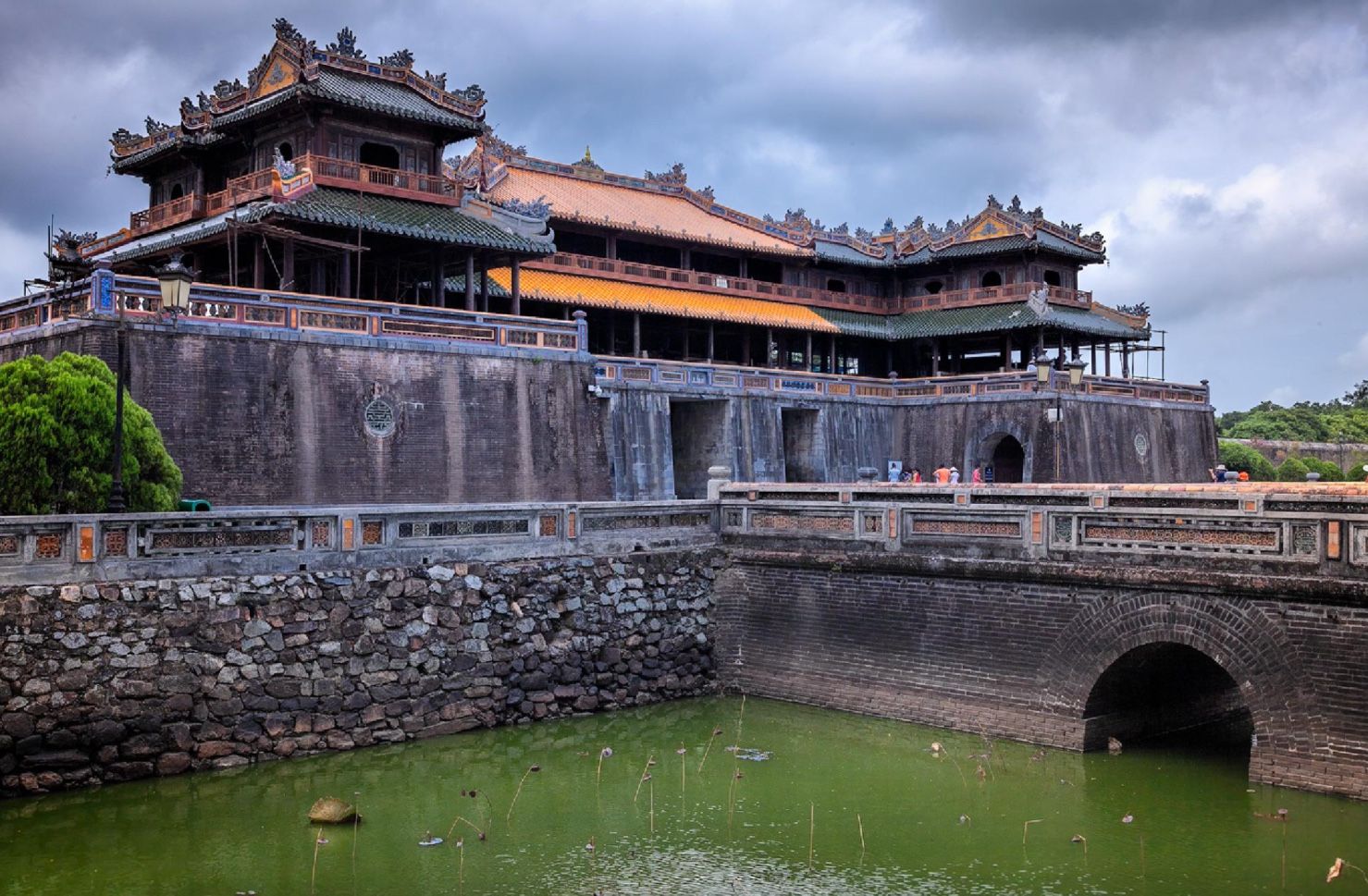
4. Cua Ngo Mon (The Noon Gate)
Perhaps the most-visited gate of the Imperial City, this entrance hosted numerous historically significant announcements, including the resignation of the last emperor, Bao Dai.
Officials once announced the names of successful doctoral candidates here, and a list still hangs on the upper floor wall. Although war significantly damaged the gate, yellow tiles marking areas reserved for the emperor still cover parts of the rooftops. Climb to the upper level to enjoy unmatched views of both the Citadel and the Hall of Supreme Harmony.
Hue Historical Citadel, Hue, Thua Tien Hue
5. Tomb of Khai Dinh
Just 10km from center of Hue in Chau Chu village, Emperor Khai Dinh’s tomb blends Vietnamese tradition with European flair. Dark, weathered concrete gives it a Gothic feel, while vibrant ceramic mosaics light up the interior making it one of the must see attractions.
Visitors first pass through the Honour Courtyard, where stone mandarins combine Vietnamese and European styles. Three more stairways lead to Thien Dinh Palace, decorated with murals of the Four Seasons, Eight Precious Objects, and Eight Immortals. A gold-speckled canopy shelters a bronze statue of Khai Dinh, cast in Marseilles. He fathered one heir and chose to be buried 18 meters beneath the statue.
Thuy Bang Commune, Huong Thuy, Hue
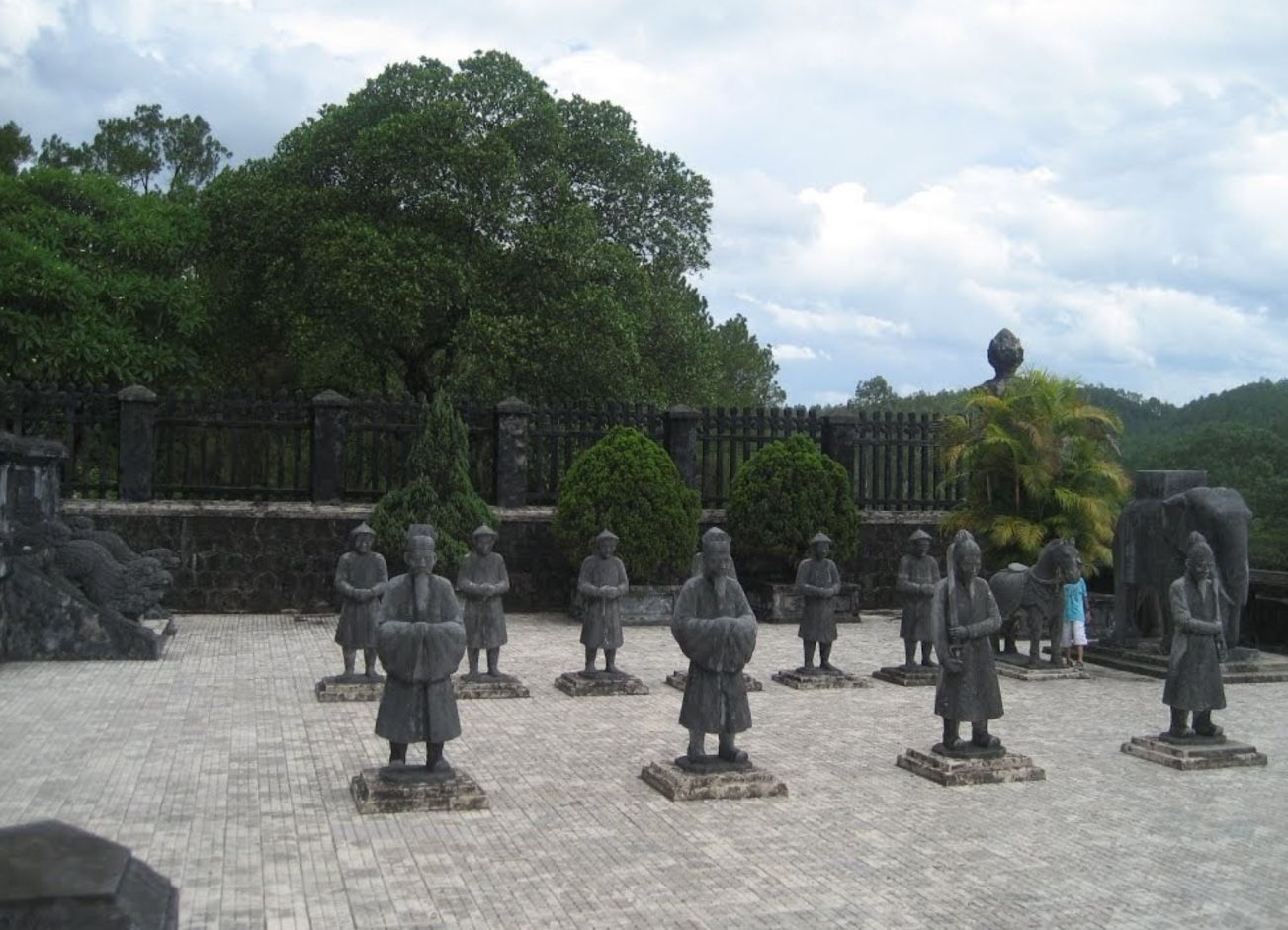
6. Forbidden Purple City
This royal structure, which sits at the center of Hue’s Imperial Enclosure, was once reserved for exclusive use by the emperor of the Nguyen Dynasty. Only eunuchs passed through its halls, since even his most trusted servants weren’t allowed beyond the gates.
Today, this historic citadel sits mostly in ruins, destroyed during several wars throughout the nation’s history. Despite some recent rebuilding efforts, travelers can easily spend a long afternoon to see paths that crisscross the grounds, exploring portions of the foundation, now overgrown with foliage, and examining the painting, woodwork and architecture that still remains.
A 10 kilometer moat surrounds what was created to resemble the Forbidden City of Beijing, and 10 gates protect these once royal grounds.
Hue city center
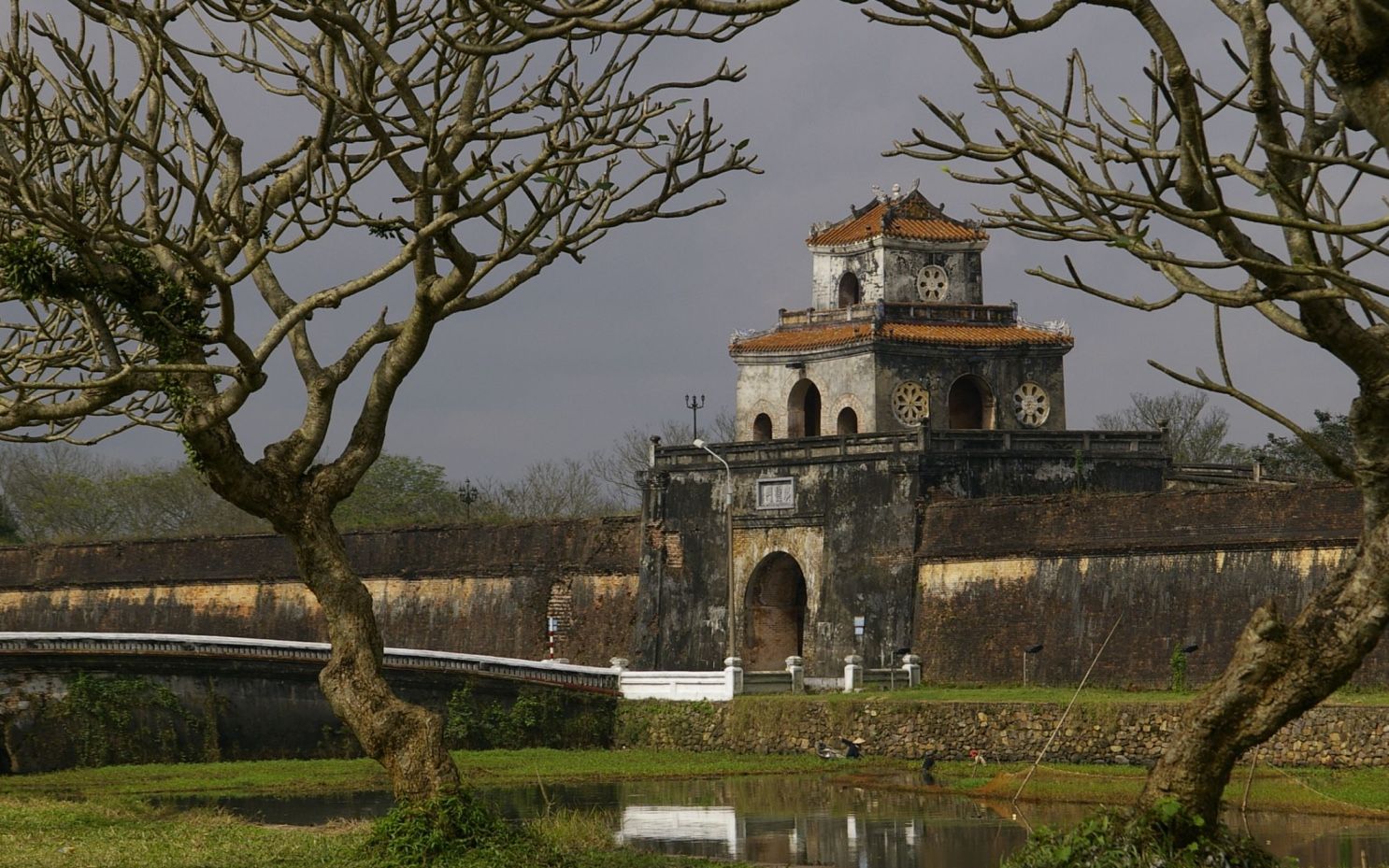
7. Flag Tower (Ky Dai)
The tower itself is made up of three platforms, with the third featuring eight canons and a sentry box at either end.
Imperial City, Hue, Thua Thien Hue

8. Thanh Toan Bridge
Thanh Toan Bridge crosses a canal in the countryside village of Thuy Thanh, about seven kilometers east of Hue. This small, covered bridge serves as a sister to Hoi An’s famous Japanese Covered Bridge. The design blends Japanese and Chinese influences, featuring a square-timber arch adorned with ancient ceramics and inscriptions in traditional Chinese script.
The Bridge during Emperor Le Hien Tong’s reign in the mid-18th century, Tran Thi Dao—the wife of a high-ranking mandarin—funded its construction to improve transport and communication across a canal that split the village in two. In recognition of her charitable act, the emperor rewarded the village with an exemption from imperial taxes.
Thuy Thanh, Hue, Thua Thien Hue, 536100

9. Royal Antiquities Museum
The museum showcases a vast collection of royal ornaments, furniture, jewelry, clothing, and artifacts from the Nguyen Dynasty (1802–1945). Long An Palace, its home, ranks among Vietnam’s most beautiful palaces, featuring a seven-compartment front and eight dragon-carved beams. Intricate wood carvings illustrate scenes and include poems and essays in Chinese script.
After relocating from An Dinh residence, the museum returned to its original site on Le Truc Street, just outside Hue’s Citadel. It once served as a library and worship space until King Khai Dinh converted it into a museum for his son, the last emperor, aiming to honor the artisans who shaped Hue’s royal legacy.
Le Truc, Phu Hau, Hue, Thua Thien Hue
10. Cat Tuong Quan Zen House
Set in the Thien An Hill pine forest, the Zen House invites visitors to join Qigong sessions, mindfulness workshops, meditation, and yoga. Skilled chefs serve nourishing vegetarian meals, while local Buddhists share deep insights into the culture, traditions, and spiritual practices that shape this sacred haven. Check out best restaurants to try Local Foods of Hue
Cu Chanh 1, Thuy Bang Huong Thuy
11. Nine Dynastic Urns
Each urn bears a name and unique Vietnamese motifs such as stars, rivers, mountains, and oceans. Minh Mang arranged them to align with the altars in the Mieu Temple, placing Cao Urn at the center and the others symmetrically behind it.
Imperial City, Hue, Thua Thien Hue
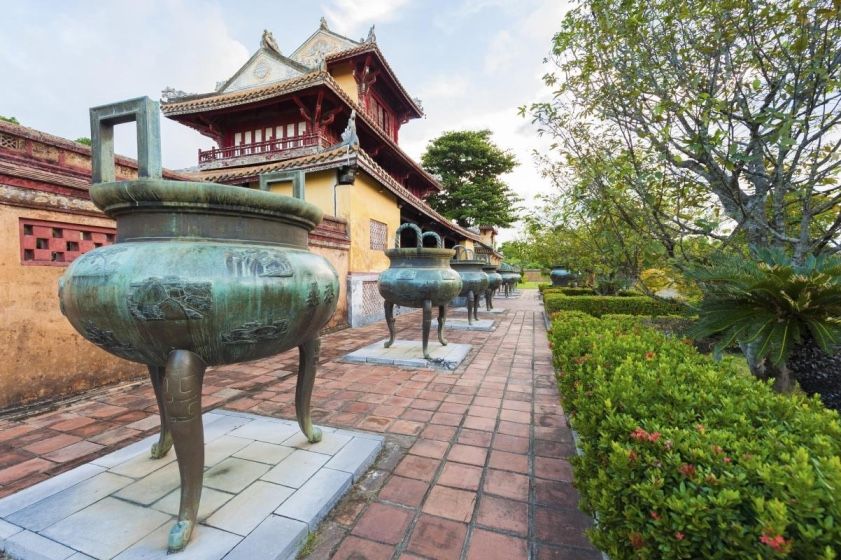
12. Dong Ba Local Market
On the north bank of the Huong River, Hue’s lively Dong Ba Market (Chợ Đông Ba) stretches over 16,000 square meters. The market retains its original bell tower from its opening by King Dong Khanh in 1887. Divided into sections, the entire upstairs floor is dedicated to clothes. Other part for handicrafts, goods and fabrics. The market is believed to be the oldest in Hue and opens daily from 3am to 8pm. Check out Tropical Fruits Of Vietnam
Chuong Duong, Phú Hòa, Hue
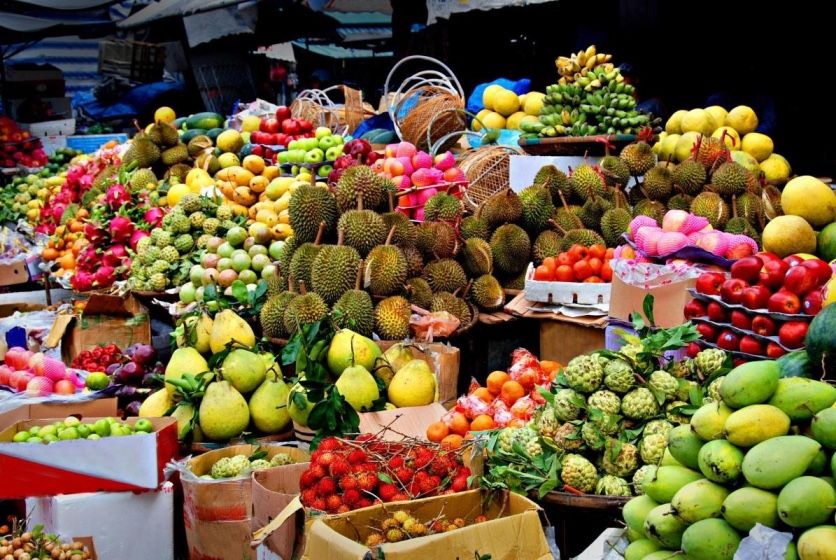
13. Thai Hoa Palace
This beautiful palace was built in 1805, once hosted receptions and ceremonies for Vietnamese emperors. The attraction is famous for its lacquered columns and innovative design. If you stand at the exact center of the courtyard, you can hear whispers from anywhere in the building.
Phu Hau, Hue, Thua Tien Hue

14. Bao Quoc Pagoda
Although renovations took place in the mid-20th century, the temple still holds its traditional charm. A spring flows down the hill into a peaceful courtyard, surrounded by balconied buildings and stupas honoring Buddhist patriarchs. The oldest stupa, built in 1714, commemorates Thích Giác Phong. Four dragon-carved pillars also stand out as key features.
17 Bao Quoc, Phuong Dúc, Hue
15. An Dinh Palace
An Dinh Palace in Hue served as the residence of Vietnam’s last emperor before his abdication in 1945. Though time has weathered the building, it still stuns with a haunting beauty that blends both Asian and European design. Visitors enter through an elaborate gate and step into a faded but grand world once ruled by royalty.
179 Phan Đình Phùng, Hue
16. Enjoy Hue Folk Songs On The Perfume River
Hue nightlife spot is all about sitting at cafes and or enjoy a freshly brewed beer at local bars, beside that, a must-try evening activity involves cruising the river by dragon boat while enjoying traditional Hue folk music.
This unique art form has attracted both locals from other parts of Vietnam and tourists for long time. Today, local musicians often blend traditional and modern instruments to engage a wider audience.
Popular day trips from Hue
There are several great destinations to consider for day trips from Hue. The best ways to explore them include hiring a private car, joining an organized tour, or renting a motorbike to travel at your own plan.
Popular day trip options include the scenic Hai Van Pass, the historic DMZ (Demilitarized Zone), Bach Ma National Park, the charming fishing village of Thuan An, and the ancient ruins of My Son Sanctuary. These day excursions offer a deeper look into central Vietnam’s culture, history, and natural beauty—all easily accessible within a few hours from Hue.
Vinh Moc War Tunnels
Located within 2 hours ride or 95km from the center of Hue. The Vinh Moc Tunnels stretch nearly 2,000 meters (6,562 feet) from the coastal town of Vinh Moc to a beach facing the South Vietnam Sea. In the late 1960s, more than 60 families dug these tunnels by hand and used them as a bomb shelter during the war. They built an entire underground community and lived there, some for as long as six years, moving between surface and shelter as needed.
Demilitarized zone (DMZ) of Hue
The DMZ, located near the 17th parallel about 100 kilometers north of Hue, once divided North and South Vietnam after the 1954 Geneva Accords ended French colonial rule. The Ben Hai River marked the border, separating communist North Vietnam from the South. Though elections were planned, they never happened. During the Vietnam War, intense battles erupted here as both sides fought to control this powerful symbol of national division. This is also a very popular day trip from Hue to which visited together with Vinh Moc Tunnels.
Bach Ma National Park
Encompassing over 310 square kilometers, Bach Ma National Park is one of Central Vietnam’s most scenic and biodiverse destinations, making it ideal for a day trip from Hue.
Just an hour’s drive from Hue, this former French hill station shelters 1,400 plant species and hundreds of birds and mammals, including rare douc langurs and leopards. Trails lead past cool waterfalls, French villa ruins, and panoramic viewpoints—perfect for a Hue day tour in nature.
Hue to Hoi An via Hai Van pass, monkey mountain, beaches
This day tour offers a full-day excursion through some of Central Vietnam’s top sights. Start with a scenic ride over the Hai Van Pass, where winding mountain roads reveal panoramic coastal views. Then stop at Lang Co Beach, known for its soft sand, shallow waters, and scenic beauty.
Next, visit Son Tra Mountain to see the giant Lady Buddha and enjoy sweeping views of Da Nang. Watch for monkeys in the forested hills. Wrap up the day at the Marble Mountains, home to cave temples, tunnels, and hillside sanctuaries.
- Check out Things to do & activities in Danang
Hue Cultural Festivals
Hue hosts numerous local cultural festivals that celebrate its royal heritage, traditional arts, and local customs.
The Culture Festivals in Hue, held biennially, stands out as the most spectacular, featuring imperial performances, áo dài fashion shows, folk games, and street performances. Throughout the year, smaller festivals like the Lotus Festival and Craft Village Fair also showcase Hue’s deep-rooted culture, attracting travelers eager to experience authentic Vietnamese traditions in a historic setting.




